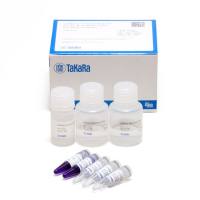Flow Cytometric Analysis of Micronuclei in Erythrocytes
互联网
390
The in vivo micronucleus (MN) test in bone marrow or peripheral blood erythrocytes is widely used as a short-term assay for the detection of agents able to induce chromosome aberrations in somatic cells and has also been shown to have good predictive potential for the identification of carcinogens and germ cell mutagens. The endpoint used is the scoring of micronuclei (MN) in bone marrow or peripheral blood erythrocytes of mice or rats. In this chapter, a detailed description of the flow cytometric micronucleus test will be given, as well as a more general description of the manual micronucleus assay. The DNA of MN is identified using the DNA-specific fluorescent stain Hoechst 33342; discrimination between polychromatic and normochromatic erthrocytes is based on staining with thiazole orange, a fluorescent probe with high RNA affinity. The use of flow-cytometric quantification of micronucleated polychromatic and normochromatic erythrocytes (MNPCE and MNNCE), beyond replacing manual enumeration, provides substantial advantages in terms of speed of analysis, as well as sensitivity. The general description of the MN assay briefly covers choice of animal species and strains, treatment regime, sampling times, and data interpretation. The description of the flow cytometric assay covers in detail erythrocyte preparation and purification, fixation, staining, data acquisition, and data analysis.



![四[N-邻苯二甲酰-(S)-叔亮氨酸基]二铑双(乙酸乙酯)加合物;154090-43-4;Elemental analysis(Nitrogen) 3.30 to 4.50 %;V66234-25mg](https://img1.dxycdn.com/p/s14/2025/1029/004/8672158669127143891.jpg!wh200)




